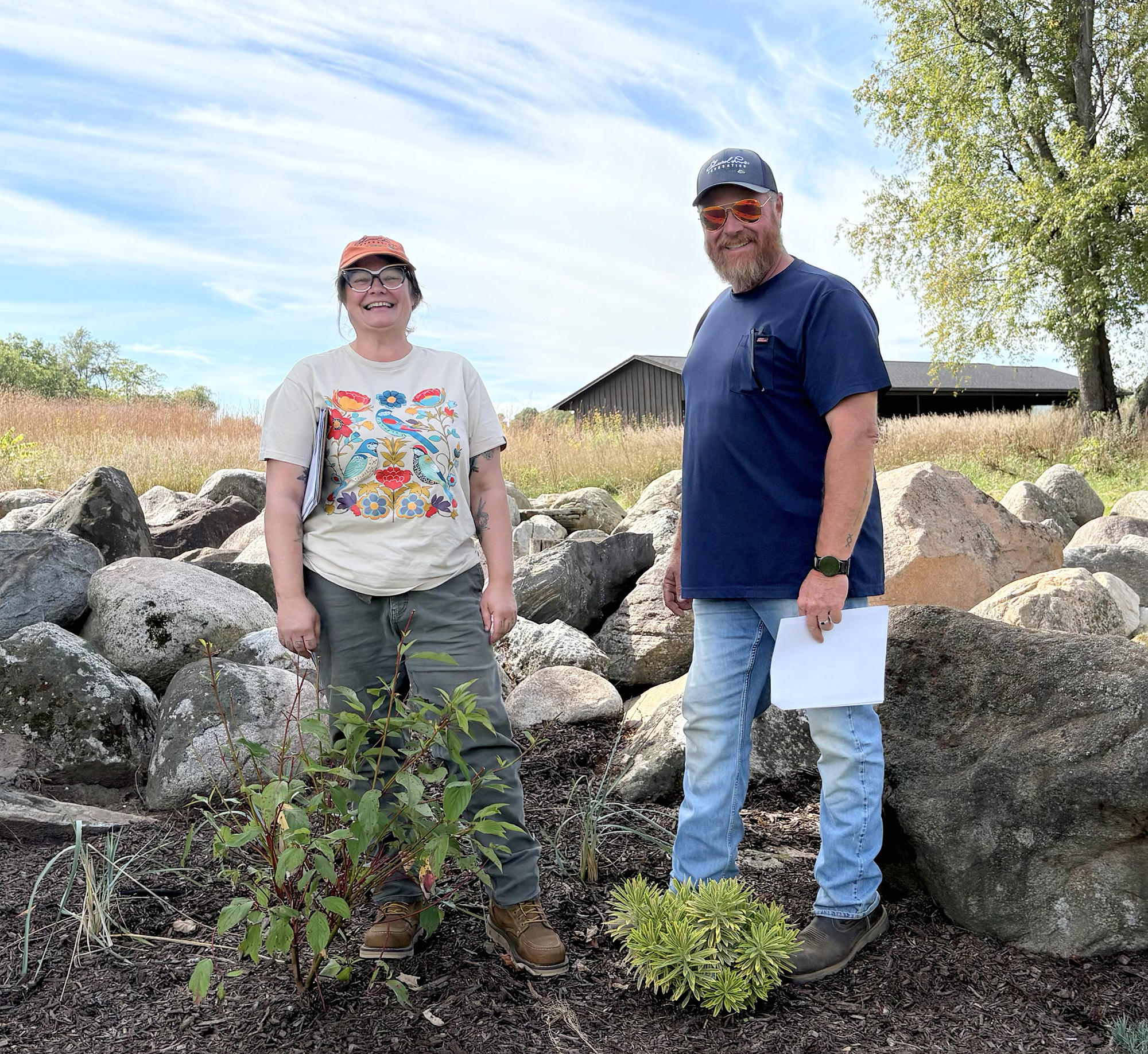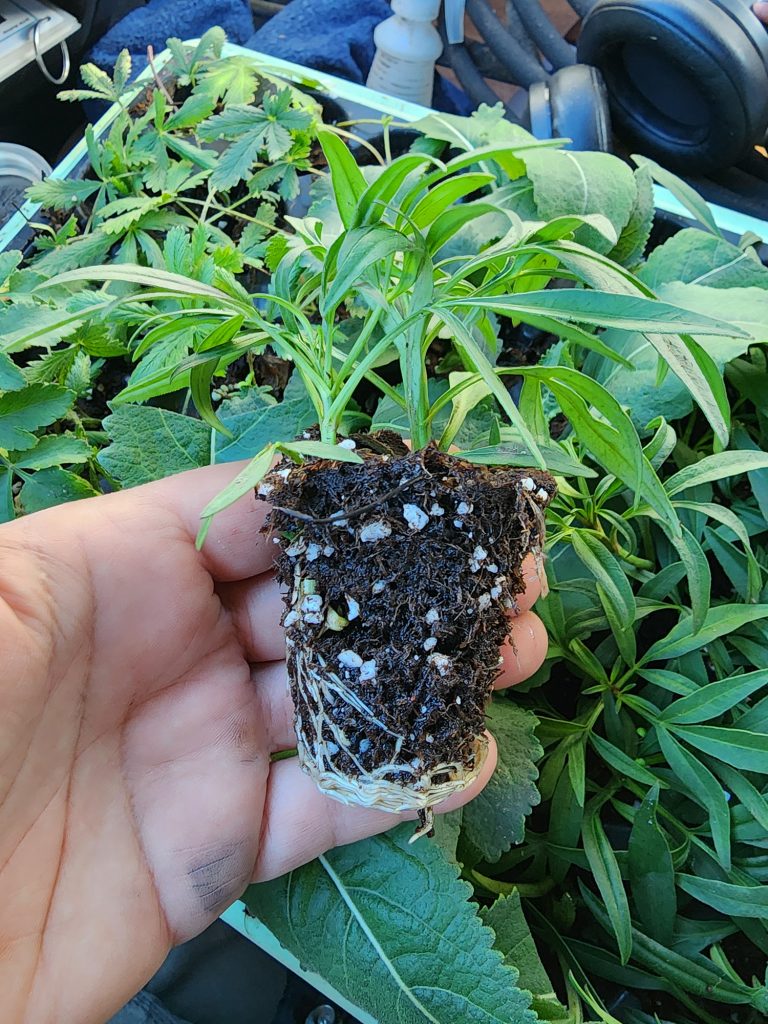This fall our grounds maintenance team launched a greenscape redesign at Big Rock Valley (BRV) along with our first major plant propagation program. Led by Maggie Chapman, the goal is to improve aesthetics and sustainability for our landscaping while reducing costs.
Many of the plants around BRV guesthouses have outlived their lifecycle and need to be replaced, explains Owen Rice, grounds maintenance manager. “During BRV’s early days, the landscaping focus was initially on ornamental plants and then shifted to prairie plants,” he says. “The redesign will be more of a hybrid approach and enable us to have more flowering plants throughout the year, instead of isolated bursts of color for a short time.”

The first site to receive a makeover is a 200-square-foot area south of the Heritage House where a firepit is located. After clearing out dead lilac bushes and Cotoneaster plants, Rice and Chapman replanted the plot with a mixture of perennials that includes such native species as:
- Rattlesnake master (Eryngium yuccifolium), a plant with thick yucca-like leaves and white thistle flowers.
- Purple coneflower (Echinacea purpurea), a plant from the daisy family that has both medicinal and ecological benefits.
- Culver’s root (Veronicastrum virginicum), which attracts pollinators with its spikes of white and pinkish flowers.
- Red twig dogwood (Cornus sericea), which looks like a flame against winter snow.
To irrigate the new plants, a drip tube system is being tested. Installed below the soil’s surface, the system will be more efficient than traditional sprinklers — and enable watering to be done without disturbing retreat guests. Another plus, the drip tube prevents fungal and bacterial diseases that can occur from top-down watering.
About half of the new plants in the Heritage House firepit greenscape originate from field stock, harvested from other areas of BRV. “We’re sitting on a gold mine,” says Chapman, referring to the abundance of diverse plants on the property. Indeed, during the foundation’s prairie restoration efforts, well over 100 species of native prairie plants were introduced across BRV that can now be used to produce excess plants for greenscapes.
Chapman, who specializes in plant propagation, initially began to reproduce BRV field stock by division, a technique that involves digging up mature plants and separating roots, crowns and shoots into smaller individual plants. This fall she collected 250 plant divisions, which were used for the firepit greenscape and other landscaping beds across BRV.
Yet the division method is labor intensive, especially for prairie plants, which have very long roots. With that in mind, Chapman has also been collecting seeds and experimenting with vegetative cuttings.

Propagation via cuttings is faster than sowing seeds and can produce liners (young, rooted plants) in about 4-6 weeks and fully rooted plants in 18 weeks, Chapman explains. In contrast, it can take 1-2 years for seeds to produce a landscape-ready plant, depending on their species. “We will still sow seeds as not all native plants are easy to propagate from cuttings, and we want more diversity,” she adds.
The new propagation program will enable BRV’s ground maintenance team to be more selective about what plants are used for landscaping while reducing both costs and the potential for disease. Right now the goal is to propagate 1,000 new plants per year, which would save more than $9,000 annually compared to purchasing from external sources.
In tandem with the propagation program, Rice and Chapman are also developing an online database to track BRV greenscape plants by their origin, new locations and ongoing health. “This database will enable us to do a much better job of documenting how the plants are doing, which will help make decisions for other areas of the property,” Rice says.